
Minimize human error in IT
Security training for administrators

Minimize human error in IT

2.000+ customers place their trust in us – from startups to large companies
Top threats under control
The change of perspective (participants slip into the role of an attacker) and the practical LAB exercises generate a high level of personal involvement.
This creates an understanding of security measures, the basis for real behavioral change and compliance with your guidelines.
From professionals for professionals
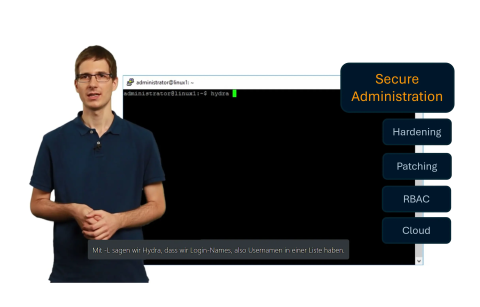
Results similar to a hands-on workshop
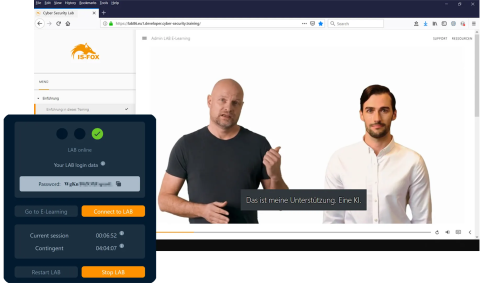

Administrators learn the security basics and recognize potential threats. Our content, developed by incident response experts, has been perfected over years of successful classroom training. They are based on real-life APT attack scenarios, which ensures their relevance and effectiveness.
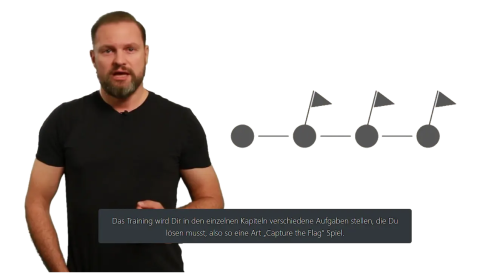
LAB exercise Exploiting Shellshock with meterpreter on Linux system
LAB exercise Using captured Linux passwords on other systems
Presentation of the various detection instruments (NIDS, SIEM, EDR)
“You can be manipulated too, you just need a different bait”
If you pass, you will receive a certificate to download.
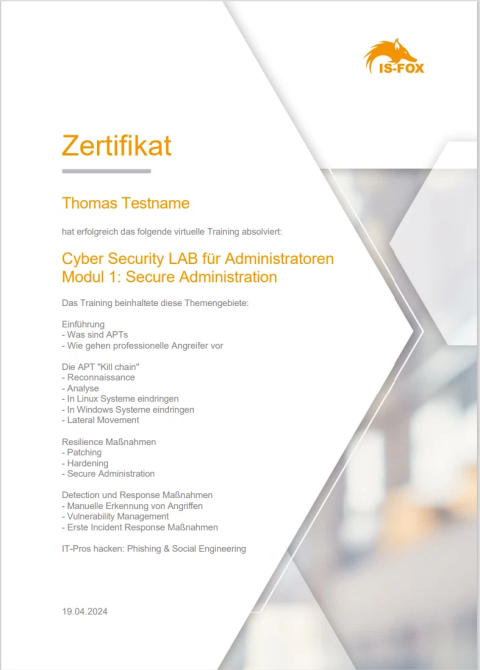
The security training course for administrators is available in German and English. It is Scorm-compatible and can therefore either be integrated into your own learning management system (LMS) or provided by us as a cloud service. In the English-language Security LAB for Administrators, participants put the knowledge they have learned into practice.
In principle, no individual adjustments are required. However, we have provided places where you can optionally integrate relevant documents and guidelines (hardening guides, emergency processes, etc.). This makes the training course “yours”. Your logo and accent color are then included on top.
The modules are licensed per training participant. The price for a training participant (including e-learning course, LAB infrastructure, operation, licenses, etc.) is between EUR 80 and EUR 250 net plus VAT, depending on the number of participants, and thus costs a fraction of a comparable classroom training course, but delivers virtually the same learning success.

The second Admin LAB module “Cloud and AD Security” covers hot security topics such as Cloud Security, Defense in Depth and Active Directory Security and offers a unique learning experience with a real trainer and an AI avatar.
How does the training work?

Shared responsibility: the role of the admin and the cloud provider
Meaningful logs in the cloud
If you pass, you will receive a certificate to download.

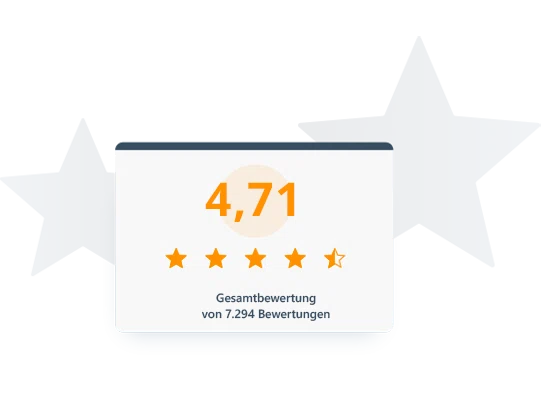

The Cyber LABs are aimed at internal and external people who design, develop or operate IT infrastructure, i.e. IT managers, IT architects, application owners, software developers, system managers, administrators and support staff.
They shouldn't, but they should understand who they are fighting. All “hacking scenarios” in the Cyber LAB are based on real APT attacks by current hacker groups and are therefore highly relevant. In the e-learning part of the Cyber LAB, we impart the knowledge of how professional attackers proceed - in the LAB environment, the participants are allowed to implement the knowledge they have learned in the LAB themselves. They slip into the role of the attacker and work through a typical “kill chain”. This change of perspective trains security awareness for potential vulnerabilities and promotes secure behavior.
IT administrators understand the approach of modern attackers and learn to see cyber security as a concept and not as a collection of security products. Numerous practical tips will enable them to significantly strengthen the security of their infrastructure through configuration, the use of on-board tools and security-conscious behavior.
After the training, IT decision-makers in small and medium-sized companies will understand how cyber security works as a concept, which measures have priority and why the mere use of individual security products does not lead to the desired protection. This enables them to make better and more efficient decisions about the use of security tools and to better classify the marketing promises of individual manufacturers.
Decentralized IT administrators understand the approach of modern attackers and learn why the cyber security guidelines of central IT make sense and are useful. They develop an understanding of the measures and no longer perceive them as annoying additional work from the head office. Security findings from audits and assessments are resolved faster and better, and the security level in the decentralized units increases considerably thanks to security-conscious behavior.
HvS-Consulting, the company behind the IS-FOX brand, combines the expertise of a cyber security specialist and a learning specialist in a unique and special way. The technical security consultants and incident responders at HvS-Consulting are among the best in their field and experience attacks on companies on a daily basis, how the attackers proceed and which technical and human vulnerabilities they exploit.
The IS-FOX Security Awareness Team takes this special knowledge, reduces complexity and prepares it in a didactic way so that the training courses set the right priorities, are understandable, contain practical and practicable tips and are fun to learn
Traditional, non-specialist learning specialists do not understand the complex content of cyber security and therefore cannot prepare the content optimally. Security specialists are too deep in the subject matter and are usually unable to convey this know-how in a simple way. The “magic” of the courses is created by this unique combination of security and learning specialists in one company.
In the LAB, participants can put the knowledge they have learned into practice. The LAB for administrators simulates a company network with several prepared Windows and Linux systems, a total of 8 server systems. It contains up-to-date attack tools and assistance.
Option “Shared LAB environment”
You get access to one of our shared LAB environments in Microsoft Azure. Your participants share the LAB with other customers. Each customer can access the shared LAB environment with a maximum of 2 simultaneous users. A shared LAB environment is ideal if you want to train a small number of participants over a longer period of time (e.g. 50 participants in 1 year). Typical scenarios are smaller companies with few IT employees and larger companies that want to offer training to new employees on a permanent basis.
Option “Own LAB environment”
You receive one (or more) exclusive LAB environments in Microsoft Azure for your participants. They access the LAB environment(s) together. You can choose between 2 LAB sizes: “Standard” with 5 or “Enterprise” with 25 simultaneous users in the LAB. A dedicated LAB environment is ideal if you want to train a large number of participants in a short space of time (e.g. 200 participants in 3 months). A typical scenario is the initial training of all IT colleagues.
As standard, the learning units (the courses) are offered fully synchronized in German and English. On request, the learning units can be subtitled in other languages for an additional charge. The LAB environment is always in English.
You can choose between a term of six and twelve months. An extension of a further six months is possible.
Yes, the learning units can be integrated into your own LMS via “SCORM Streaming”. Your training department will receive a learning package in SCORM format for your LMS. Although the content is retrieved (“streamed”) via the IS-FOX Cloud, the course behaves identically to an “internal course”, i.e. course administration, invitation management, booking of success, etc. takes place in your LMS.
The LABs and the associated administration (the “LAB Portal”) contain a lot of technology and logic and therefore cannot be operated in a customer's own Azure tenant. However, you can store the link to your internal LMS in the LAB Portal to establish a transparent connection.
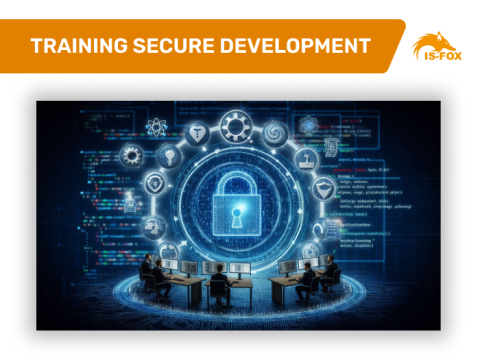
Online training for developers with a high practical component and your own LAB environment.
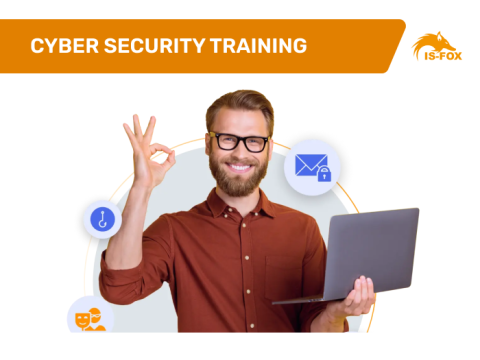
Modern and entertaining IT security trainings protect your company from attacks and their consequences.
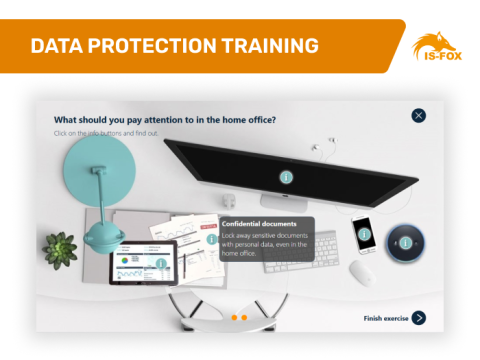
Up-to-date and modern online data protection training courses make your employees fit for GDPR. Find out more and book training now!